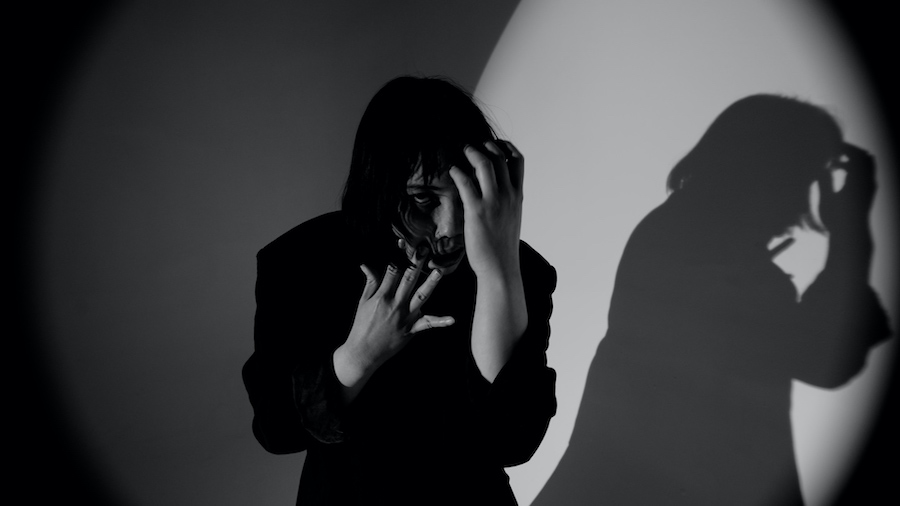“A bit of grit under an oyster’s shell can evolve into a luminous pearl,” says CanAsian Dance’s artistic director, Denise Fujiwara, in her pre-show remarks. The luminous pearls she is referring to are the five works in GRIT: Short Dances, an online dancefilm showcase streaming on YouTube from May 14 to 21. The creators behind each work have plucked an original, often abstract idea and polished it into a striking visual product. Together, the five dances in this festival form a kaleidoscopic tapestry that offers a glimpse into the breadth of Asian perspectives that are woven into the fabric of our country.
Defined by Bone
Mayumi Lashbrook describes Defined by Bone as a piece of dance-theatre. To me, it came across as poetry in motion — a metaphorical rumination on her family’s history and the wider struggles, both historical and contemporary, of Japanese Canadians. Filmed in a rustic attic, the work begins with her opening an old trunk — a metaphor for her unpacking her ancestors’ stories. Lashbrook’s highly stylized movements allude to various painful events in Japanese Canadian history: the sequence of panicked lunges, with her desperate outstretched arms and her face wearing an expression of terror, suggests the scars of the internment of Japanese Canadians during the Second World War. The most potent moment, however, comes at the end. Lashbrook leaves the audience with a haunting poem that lingers long after the end of the performance. “I want to be defined by my bones,” she writes. “Bones that carry the history on my back.”

Chitra
In Chitra, Purawai Vyas uses her training in the classical Indian dance form of bharatanatyam to explore the internal and external struggles of self-expression. At times, her movements are introspective, restrained and even hypnotic. The dance opens with Vyas sitting on the floor, her head tucked between her outstretched arms as her torso undulates in a gentle wave that gradually grows more pronounced. In other moments, the performance is flashy and unrestrained, with Vyas stomping her feet and traversing the floor to Neena Jayarajan’s chanting and the rhythmic beat of the nattuvangam, small cup-sized cymbals. The work is not one continuous dance but rather separate segments pieced together by videographer Sid Sawant. In some sections, the editing is ingenious, like when he superimposes Vyas performing various precise arm patterns at the same time. But too often, the videography feels constrained and narrow — not fully capturing the beautiful duet of music and dance between Vyas and Jayarajan.

Puan
For me, Puan struck a chord in a way none of the other pieces did. Although Elvina Raharja crafted it as an exploration of womanhood (puan means “woman” in Indonesian), I saw it more as a look at the immigrant experience. Her piece, to me at least, perfectly encapsulates what it means to straddle two cultures. In the beginning, Raharja wears a sarong, but her traditional Indonesian attire is juxtaposed with a blazer. Her arms move erratically, swiping in front of her tense face. It’s as if she’s being torn between two societies: that of East and West. The music, too, is a disquieting mix of hip electronic beats and the traditional Javanese gamelan. Phil Kim’s discombobulating editing matches the swirl of emotions that envelop this piece, but the numerous rapid cuts make it sometimes feel like a music video. Regardless, Puan remains a powerful examination of self-acceptance and liberation.

Leher
Leher is the antithesis of Puan. While the latter is chaotic and spriteful, Tanveer Alam’s creation is quiet and reflective. He is clad in all black, except for a pair of yellow ghungroos wrapped around his ankles that jingle when he stomps his feet. But for much of the piece, Alam’s feet remain planted on the ground as he sways back and forth, and from side to side, with his arms tucked tightly to his chest. For a dance about rivers and waves (leher in Urdu), Alam remains oddly rigid throughout. In the program notes, Alam indicates that his creation is based in the Indian dance form of kathak. But the colourful costumes, complex footwork and facial storytelling that define the art form are sorely missing in this work. It doesn’t help that Robert Kingsbury’s videography feels cluttered and uncanny — with multiple shots of Alam messily superimposed, one on top of another.

Project Lullaby: CHOICE
Kin Nguien’s dancefilm CHOICE closes the showcase. Like the other pieces in her Project Lullaby series, this latest installment focuses on the mental health struggles of Asian women. CHOICE is reminiscent of Inside Out — but darker and more potent. Like the critically acclaimed Pixar movie, Nguien’s film toggles between reality and — what one can assume to be — the mind. In the opening sequence, Nguien is standing by a cliff with tears streaming down her face. In the next moment, we cut to a nebulous room, with Nguien standing under a skylight. She’s tossed and pulled like a marionette on a string by an elusive demon-like figure (AJ Velasco), whose body remains invisible, except his hands. Gradually, the pair falls into harmonious synchronicity — a metaphor, perhaps, for a state of mind that is once again in equilibrium. Back in reality, Nguien gives us an ending that, for an otherwise sombre and unsettling work, is buoyant and hopeful.

GRIT: Short Dances is streaming online on YouTube from May 14 to 21. Learn more >> canasiandance.com






